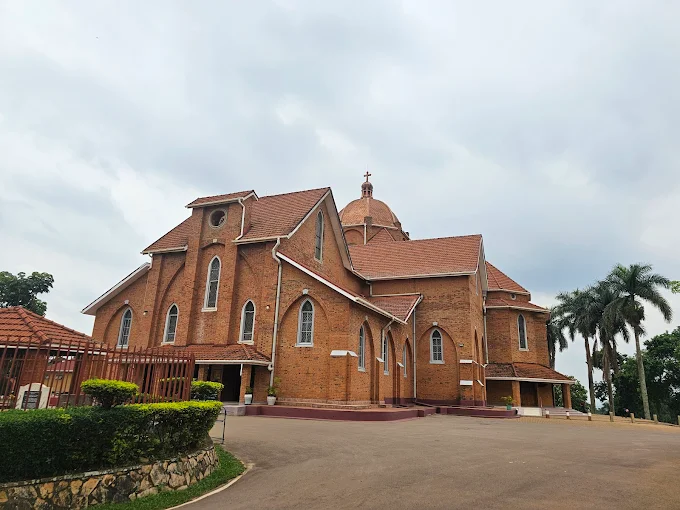Namirembe Cathedral: Uganda’s Spiritual Heartbeat — History, Visiting Guide, and Costs
Namirembe Cathedral is much more than a striking architectural landmark perched on one of Kampala’s rolling hills; it is a symbol of Uganda’s spiritual heritage and a living testament to the resilience and growth of the Anglican Church in East Africa. Known officially as St. Paul’s Cathedral Namirembe, this historic site draws visitors not only for its impressive structure and serene setting but also for its rich history, cultural significance, and ongoing role as a center of worship and community life.
If you’re planning a visit to Kampala, exploring Namirembe Cathedral offers a deep dive into Uganda’s religious journey, colonial-era legacies, and vibrant present-day faith community. Here’s a detailed overview that covers its history, cultural importance, how to book a visit, and what costs to expect.

The Rich History of Namirembe Cathedral
The origins of Namirembe Cathedral trace back to the late 19th century during the earliest days of Christian missionary work in Uganda. Established by the Church Missionary Society (CMS) in 1890, it was originally built as a modest wooden structure that reflected the fledgling Anglican presence in the region.
Namirembe, which means “peace” in Luganda, was carefully chosen for its elevated location offering a commanding view of Kampala and the surrounding landscape. The cathedral’s position on Namirembe Hill also made it a symbolic spiritual high point for the growing Christian community.
Over time, the cathedral underwent several reconstructions due to damage from storms and other challenges, culminating in the magnificent brick Gothic Revival structure that stands today. This architectural beauty is notable for its tall spires, stained glass windows, and expansive nave that welcomes thousands of worshippers and visitors alike.
Namirembe Cathedral has played a pivotal role in Uganda’s religious history. It became the seat of the Anglican Archbishop of Uganda, Rwanda, and Burundi and later the Church of Uganda, making it the spiritual headquarters for millions of Anglicans in the region. The cathedral was central during key moments in Uganda’s history, including colonial times, the struggle for independence, and the post-independence religious revival.
Fascinating Facts About Namirembe Cathedral
Namirembe Cathedral is the oldest cathedral in Uganda and one of the most historically significant religious sites in East Africa. Its long-standing role as a spiritual center has made it a place where royalty, political leaders, and ordinary Ugandans have gathered for worship, national events, and moments of reconciliation.
The cathedral houses several relics and memorials, including graves of early missionaries and notable Ugandan religious figures. Its bell tower, with bells imported from England, has called generations to prayer and remains a cherished feature of the cathedral’s identity.
Namirembe is not just a monument to the past—it is a vibrant, active place of worship. Daily services, community outreach programs, and cultural events keep the cathedral at the heart of Kampala’s spiritual life.
How to Book a Visit or Tour to Namirembe Cathedral
Visiting Namirembe Cathedral is generally straightforward since it is open to the public daily for worship and tours. However, if you wish to experience a guided tour that provides in-depth historical context and access to restricted areas such as the bell tower or archives, it’s best to arrange this in advance.
Most hotels and tour operators in Kampala can facilitate bookings for guided visits to Namirembe Cathedral. Alternatively, contacting the cathedral’s administrative office directly via phone or email can secure personalized tours or special group visits.
Guided tours usually include a detailed history of the cathedral, explanations of its architecture and religious significance, and insights into its role in Uganda’s socio-political history.
Cost of Visiting Namirembe Cathedral
Entrance to Namirembe Cathedral itself is typically free, especially for those attending services or visiting during open hours. However, guided tours or special access to certain areas such as the bell tower may incur a modest fee.
A private guided tour can cost anywhere between $10 and $30 USD per person, depending on the duration and level of detail. Group tours or educational visits may have negotiated rates.
Donations to support the maintenance of the cathedral and its community programs are welcomed but not mandatory. Visitors are encouraged to contribute what they can to help preserve this historic site.
What to Expect When Visiting Namirembe Cathedral
Visitors will be greeted by the cathedral’s impressive Gothic-style façade and tranquil grounds that invite quiet reflection. Inside, the soaring ceilings, colorful stained glass windows, and wooden pews create an atmosphere of reverence and history.
If attending a service, you’ll experience the rich liturgical traditions of the Anglican Church in Uganda, often featuring beautiful choral music and lively congregational participation. Outside of service times, guided tours offer fascinating stories about the cathedral’s founding, its role during colonial and post-colonial eras, and the figures who shaped its legacy.
Photography is generally allowed in public areas but always check with the guide or administration to respect any restrictions, especially during worship.















